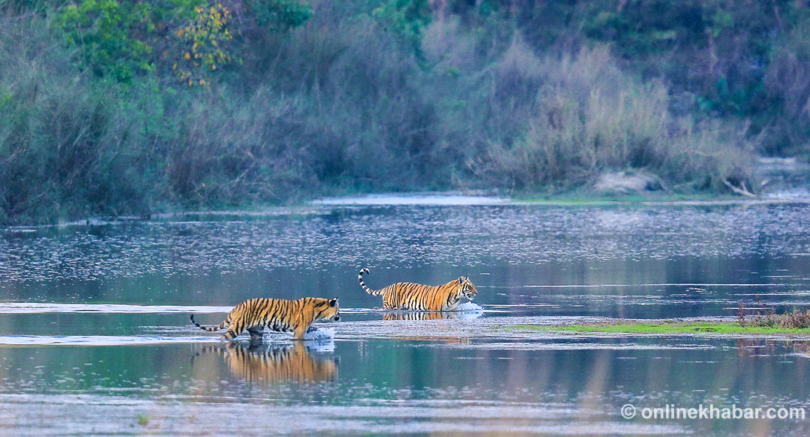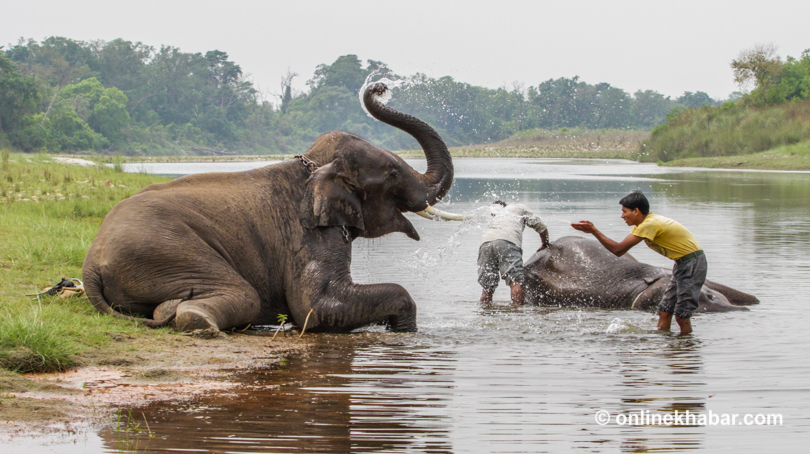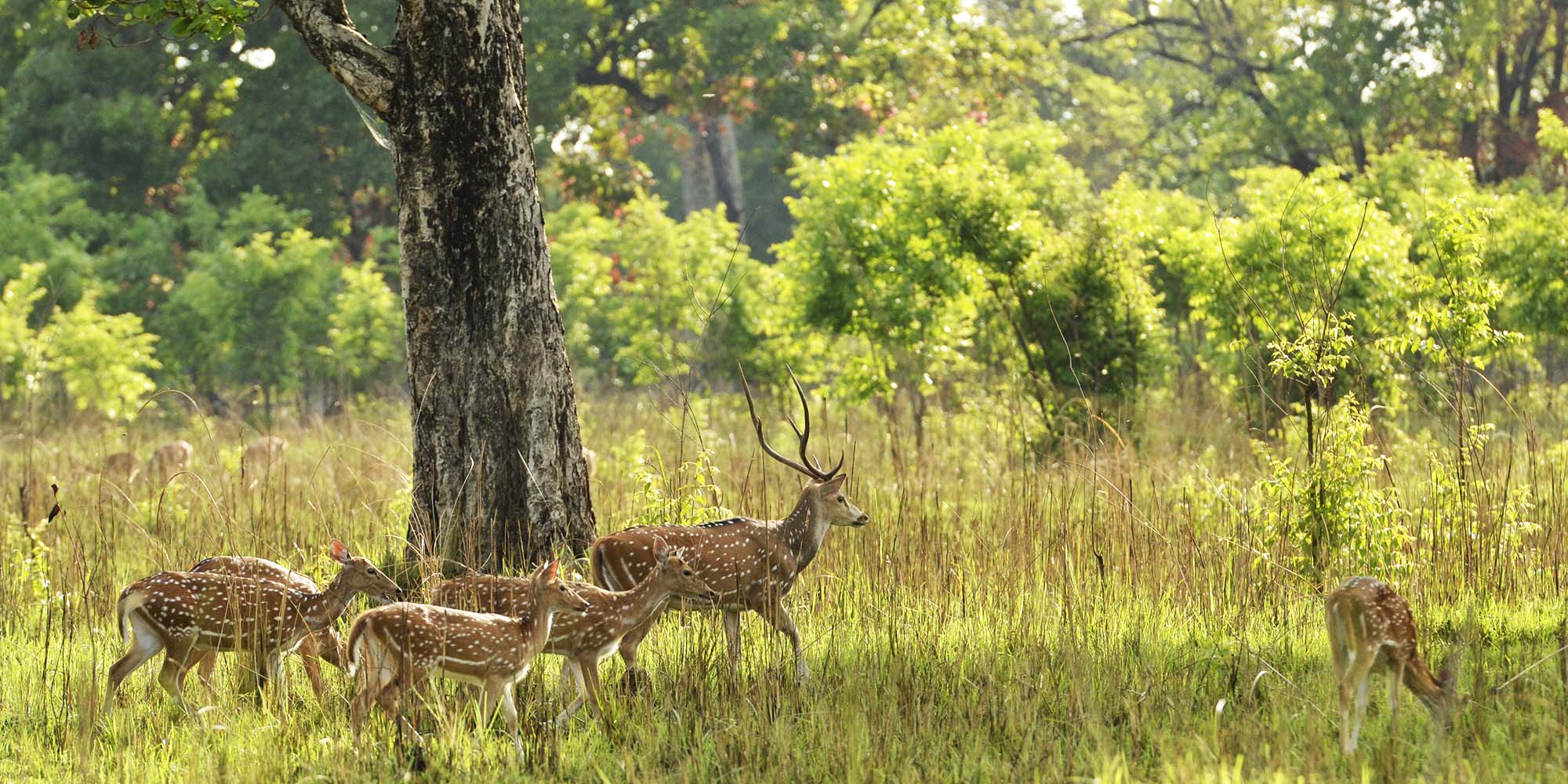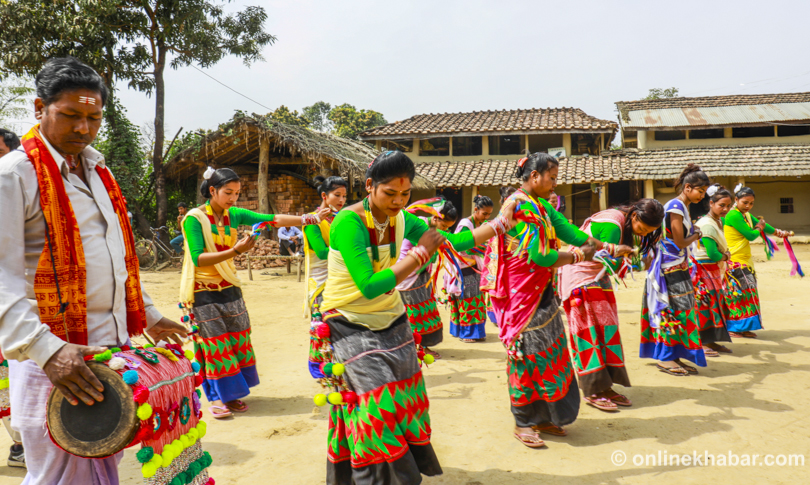At Nepal’s western frontier, wilderness beckons
Nepal’s Far-West dazzles with many natural and cultural attractions. But these attractions have failed to draw tourists from far and wide for want of publicity. Here we look at must-visit areas of Nepal’s western frontier.

Bardiya
Naya Muluk, or ‘new country,’ the Ranas called what are today the districts of Kanchanpur, Kailali, Banke and Bardiya. The British returned this swath of Tarai jungle, which they had won after the Anglo-Nepalese War in 1814, to Nepal as a gesture of gratitude to Jung Bahadur Rana for his assistance in quelling the Sepoy Mutiny of 1857. From 1814 till the return of the territory, the British had only extracted timber from Kanchanpur and Kailali; Banke and Bardiya’s jungles were spared.

Too far from Kathmandu and with next to no importance politically, Bardiya remained a backwater until the mid-1950s when malaria was curbed enough to encourage the hill-dwelling populace to settle the Tarai. Up until then, so the saying went, those from the hills could not survive a year in the malarial lowlands. People descended from the hills in a giant wave, like the flashfloods that hurtle down in the monsoons. Naya Muluk became the new home for thousands of axe-wielding, forest-clearing, land-hungry families. Populations grew, forests vanished.

If Bardiya hadn’t been declared a protected area in the mid-seventies, Tarai jungles would have survived only in old tales. The 968 square kilometers of Bardiya National Park is what remains of that unforgiving wilderness. It’s still a wild world, untamed and inhospitable, home to some of the most magnificent and ferocious animals.
‘Bardiya’ means ‘herder’ in Tharu—an allusion to this indigenous people’s practice of animal husbandry on the edges of the immense forests. Today, Tharus no longer can take their animals to the forests nor can they move freely in and out of them like they used to for extracting raw materials from which they fashioned utensils, ropes, roofing and countless other household items. Some old houses, and old ways of life, still survive along the park. One such place is Thakurdwara, a village contiguous to the national park.
Thakurdwara is a mixture of long, single-storey adobe huts with thatched roofs and large resorts catering to tourists. It’s a human habitation on the edge of animal haven. The border between the wilderness and the village is a porous one as far as the animals are concerned. Unrestricted by visiting hours or permits and unable to resist the ripening crops, wild elephants often cross over to raid fields of rice or sugarcane. This has resulted in a conspicuous architectural structure—machan, a wooden tower where anxious farmers keep vigils, armed with metal pots and pans and the occasional muzzle-loader to scare away pachyderms and other animals on the lookout for an easy meal.

Being in Bardiya, even when you are not in the national park and virgin forests is a sharing of space with animals. One time, while I was brushing my teeth before bed, I heard a squeal and thrashing in the bougainvillaea bush outside the bathroom window of my cottage. I shone a flashlight into it and saw a bushy, ringed tail. Following the tail upward I found a mouse dangling from the mouth of a civet. I went to bed and lay down as the civet crunched on the bones. On some mornings I woke to the call of a jungle rooster sauntering on the resort’s lawn.
Tharus, the indigenous inhabitants of Bardiya and much of Nepal’s western Tarai, are an equally fascinating lot. Their traditional way of life makes eco-tourism sound like a joke: the Tharu way of life, now dying out, was a manual on living with nature. They depended on nature’s bounty, in their case the jungles and the rivers and the grasslands, without ever exploiting it.
In an age where old ways of life have either gone or are on the verge of disappearance, it’s a bit foolish to expect to find Tharus living like they did fifty years ago. But it is the rarity that now adds to the beauty of Tharu culture. It’s a delight to come across an old Tharu woman, her septum limp from years of bearing the weight of her nose ring, immersed up to her neck in a stream, a small pear-shaped wicker basket on her head, gliding through like an otter, spooking fish and crabs into the net she is dragging along the bottom. Sometimes there are little girls, probably her granddaughters, following in her wake with their own fishing nets and baskets. In the water culture itself made fluid, flowing from one generation to another, as granny and the children glide upstream, the kids squealing in delight as a fish breaks the surface.

However different a Tharu village might be to a place you are familiar with, it is nevertheless homely, welcoming, reassuring. Your entry permits into Bardiya’s jungle proper on the other hand is akin to signing a document forfeiting comforts, bodily and mental. There is the vivacity of countless life forms, enormous trees and tiny birds, tranquility and excitement—almost everything that cities have lost. You might also see a tiger or a herd of elephants or any of Bardiya’s other mammals, which include the rhino, Asiatic wild dog, blue bull. A sudden whirring overhead may turn out to be a flock of giant hornbills, or you might spot any of 426 species of birds found in Bardiya. Luck might bestow on you a smooth-coated river otter sighting. Or you may see nothing at all after sitting for hours in a shady patch on the banks a river.
Side Trips
Blackbucks: If you’ve made the long way west to Thakurdwara, it’s worth visiting a couple of places near there. One is the Blackbuck Conservation Area. This 488-hectare patch of grassland is home to the northernmost population of blackbucks in the world. Living close to humans has given the antelopes here a nonchalance that will be relished by camera wielders of all stripes, from professional photographers to selfie buffs.

Crocodiles: Get closer to crocodile than you ever can (or would wish to) at the national park’s crocodile breeding centre. From puny gharial babies sunning themselves to giants who have fathered or birthed them to stare downs with mugger crocodiles that unsettle even with a fence in between, this is a showcase of Bardiya’s reptilian gems.
Tharu Museum: In case you don’t get to see Tharus in their traditional attire, doing what their forefathers did or get the chance to visit a traditional Tharu home, there is the Tharu Museum near the entrance to the park. It’s a thorough replica of a Tharu home, down to their altars and grain containers.
Further west: If you plan to travel west from Bardiya, stop at the Ghodaghodi Tal. Situated right next to the East-West Highway, this lotus-covered lake is a haven for mugger crocodiles and birds including cormorants, jacunas and eagles. Keep well away from the water: there have been instances of crocodile attacks on people.
Bardiya National Park in Numbers
AREA: 968 sq km—largest protected area in Nepal’s lowlands.
ESTABLISHED: In 1976, a small area given protected area status, named Royal Karnali Wildlife Reserve. Renamed Bardiya Wildlife Reserve in 1982. Park’s area expanded in 1984, declared Bardiya National Park.
VEGETATION: Sal forests, phanta (grasslands), and riverine forests.
MAMMALS: Royal Bengal tiger, Asian elephant, blue bull, blackbuck.
BIRDS: A total of 426 species, including great hornbill, sarus crane, Bengal florican, lesser florican, black-bellied tern, Pallas’s fish eagle, grey-headed fish eagle, painted stork, black-necked stork, and lesser adjutant.
IN AND BY THE RIVERS: Ganges river dolphin, mugger crocodile, gharial, smooth-coated otter, golden mahseer.
DISTANCE FROM KATHMANDU: 550 km
Khaptad
 If paradise is a place of natural beauty that does not change at all or changes little over time, Khaptad National Park in Nepal’s Far-Western Development Region is one. An ascetic arrived there in the mid-1940s and, struck by the place’s wildness and isolation settled down to search for the Ultimate Truth. Khaptad is still that wild, almost that isolated.
If paradise is a place of natural beauty that does not change at all or changes little over time, Khaptad National Park in Nepal’s Far-Western Development Region is one. An ascetic arrived there in the mid-1940s and, struck by the place’s wildness and isolation settled down to search for the Ultimate Truth. Khaptad is still that wild, almost that isolated.
Perhaps paradise is a handful of people in an immense wilderness. If so, Khaptad is one. The wilderness is a 225 sq km mesh of 11 types of trees and dozens of patan, hillocks that are green, alpine flower-carpeted mounds, like stupas without spires. The permanent population of Khaptad – a Nepal Army company and some park employees – is under 100. The army barracks and the national park office buildings occupy one corner of a hill, an island in the midst of an ocean of wilderness. Walking half a kilometre in any direction from them is like setting sail into another world, where encountering another person is a rarity. Cell phone reception is available on a hilltop, an inconvenience that makes it more convenient not to call. Even getting into Khaptad is not easy. The road that connects the trailhead at Jhigrana to Silgadi gets washed out every monsoon, limiting traffic and hence tourist numbers.

Being in Khaptad is like being in one of those spiritual retreats where they strip you off of everything that you might use to pass time. You are reduced to yourself and your surroundings, with an occasional small talk with the major or the warden or any of the soldiers and park employees. To make use of your solitude (or to get rid of its chafing effect) you walk in the ageless forests, finding leopard pugmarks, spooking blood pheasants, flushing pikas out of their burrows, and wondering every twenty minutes or so, how could someone live here for fifty years? That is how long the ascetic who stumbled upon Khaptad spent there, eventually becoming known as Khaptad Baba.

It’s hard to know why someone lives alone in a place for five decades. The easy answer is that Khaptad is a beautiful place, but beauty’s hold is fickle. Like any truly wild place, Khaptad’s charm hits home much later, perhaps when you are stuck in traffic and you pine for that emptiness and silence of Khaptad’s meadows.
Khaptad National Park in Numbers
AREA: 225 sq km
ESTABLISHED: 1984
FLORA: 567 species (estimated), of which nearly 400 are listed; 125 of them are medicinal plants, 50 are poisonous.
MAMMALS: 23 species of mammals recorded, including musk deer, leopard cat, grey wolf, Asiatic black bear, Asiatic wild dog, yellow-throated marten, pika.
BIRDS: 287 species of birds, including Impeyan Pheasant (Nepal’s national bird), blood and cheer pheasants, white-rumped vulture.
NEW TO SCIENCE: In 1996, the Khaptad Pelobatig Toad (scutiger nipalensis), was discovered in Khaptad.
ENDEMIC FROG: Bajhang Frog (paa ercepeae) is endemic to Khaptad.
MUST SEE: The postcard-perfect Ghodadauney Patan, the tranquil Khaptad Daha with its old shrines, the views of Api and Saipal ranges, Sahasralinga shrine, also the highest point in the park (3,300 m).
Getting To Bardiya
There are daily flights from Kathmandu to Nepalgunj. Thakurdwara is almost 90 km from Nepalgunj. Local buses run between Nepalgunj and Ambassa. From Ambassa, you can get rides to Thakurdwara on buses or jeeps. Overnight buses ply the route between the capital and Bardiya. Buses also run for the enchanting wilderness from Pokhara and Chitwan.
Getting To Khaptad
The quicker option is to fly to Dhangadhi, then go by road to Silgadi and begin your trek from there. Or, if the road is in good condition, take jeeps from Silgadi to Jhigrana, the entry point into Khaptad National Park. It is recommended that you walk from Silgadi to Jhigrana. This will get your body in trekking mode, which is crucial because the section from Jhigrana is as steep as it gets. It’s not a trail to take on straight after being in a vehicle for hours.
Overnight buses running from Kathmandu to Dhangadhi will deposit you at Attariya, from where you can get buses or microbuses to Silgadi.
Packing for Khaptad
Khaptad still lacks creature comforts that are now becoming common in even remote villages. Like hotels or lodges. Khaptad still doesn’t have one, although there is going to be one soon. The Army barracks and the park employee quarters are the only places that can offer shelter, so unless you know an uncle who knows a general in the army or is the cousin of the warden, take a tent and sleeping bag. Warm clothes are a must (no such thing as summer in Khaptad). Carry plenty of food, though be mindful of stowing it away from your tent if you’re sleeping near the forest (enough bears around to catch a whiff of your noodles). Best time to visit Khaptad is between March and May or October and November.

Comments
Post a Comment